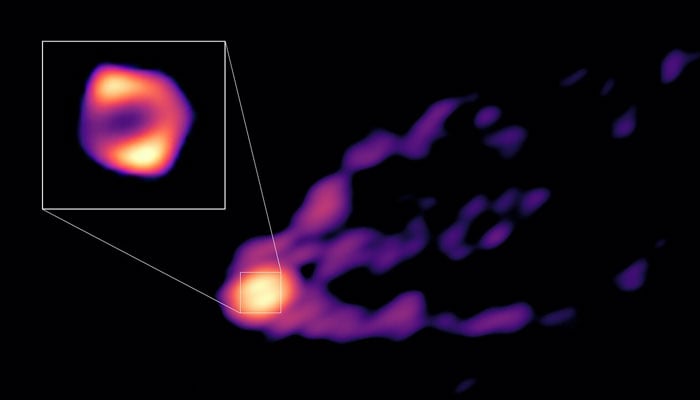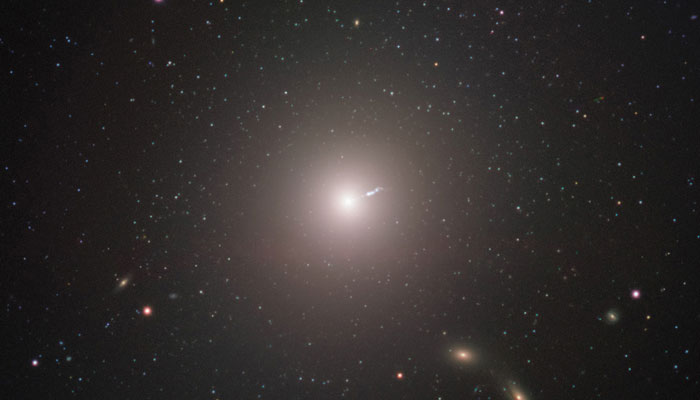Scientists capture image showing escaping jets from black hole

Astronomers have captured an image from deep space which shows a jet material coming out from a black hole and entering into a space between the galaxies.
The released image of a black hole — located at the centre of the galaxy Messier 87 (M87) — would enable scientists to determine the behaviour of black holes.
Supermassive black holes are mysterious objects, located at the centre of a space which are gravitationally so powerful that nothing can escape from them not even light. It is still unknown what is inside the black hole or what happens when something goes inside a black hole.
Many supermassive black holes emit powerful light jets that are extremely bright.

Dr Ru-Sen Lu, the lead author of the Shanghai Astronomical Observatory said: “We know that jets are ejected from the region surrounding black holes, but we still do not fully understand how this actually happens.”
“To study this directly we need to observe the origin of the jet as close as possible to the black hole,” said Dr Lu.
The observation was carried out with the help of telescopes from the Global Millimetre VLBI Array (GMVA), the Atacama Large Millimeter/submillimeter Array (ALMA) and the Greenland Telescope (GLT), in 2018.
The focus object in space is galaxy M87 which is 55m light years away. This galaxy hosts a black hole which is 6.5bn times huge than the Sun.
According to scientists, the emitting jets from supermassive black holes are powered by the rotation of the black hole. But they do not yet know what causes them.
The captured image was published in the journal Nature showing the material interacting with matter, spinning around a supermassive black hole, however, the picture does not show the point of origin.
Dr Kazunori Akiyama of MIT’s Haystack Observatory, said: “This is the first image where we are able to pin down where the ring is, relative to the powerful jet escaping out of the central black hole.”

Dr Akiyama, who is also the developer of the imaging software used to visualise the black hole, said: “Now we can start to address questions such as how particles are accelerated and heated, and many other mysteries around the black hole, more deeply.”
An astrophysicist Dr Ziri Younsi at University College London, who was not involved in the process, explained the image as “really exciting”.
“It’s another important piece of the story of how black holes power jets.”